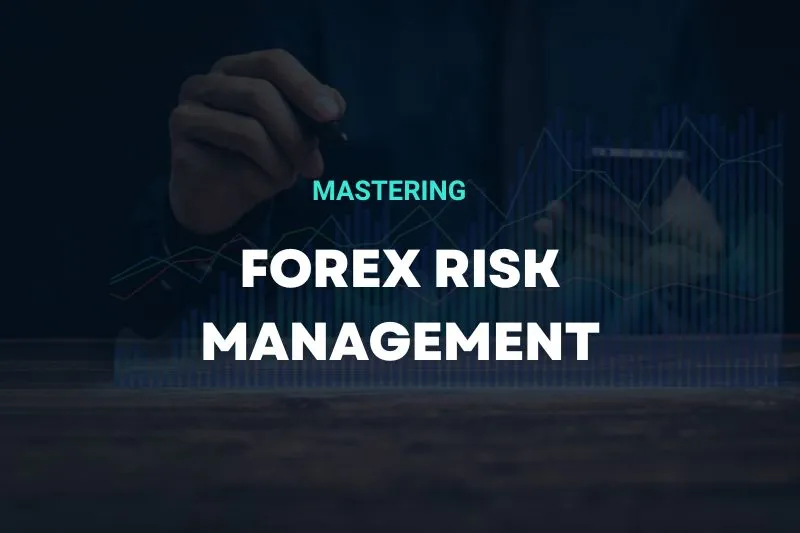In Forex trading, most traders focus on finding the perfect strategy — the best indicators, signals, and setups. But the truth is, even the most accurate system will fail without proper risk management. Risk management is the invisible backbone of every successful trader’s career. It’s not glamorous, but it’s what separates consistent winners from emotional gamblers.
In this article, we’ll explore the core principles of Forex risk management and how you can apply them to achieve stable, long-term profitability.
1. Understanding Risk in Forex
Every trade carries risk — the possibility that the market moves against you. However, risk management isn’t about avoiding losses; it’s about controlling them so they don’t destroy your capital.
In Forex, risk is influenced by:
- Leverage: How much you borrow to open larger positions.
- Position size: How big your trades are relative to your account balance.
- Stop-loss distance: How far your exit point is from your entry.
When you learn to balance these three factors, you gain control over your trading destiny.
2. The 2% Rule: Protecting Your Capital
One of the golden rules of risk management is to risk no more than 2% of your account on any single trade. For example:
If your account has $5,000, your maximum risk per trade should be $100.
This rule ensures that even after several losing trades, you’ll still have enough capital to recover. Small, controlled risks lead to long-term survival — and survival is the first step to success.
3. The Power of Stop-Loss and Take-Profit Orders
Trading without a stop-loss is like driving without brakes. A stop-loss automatically closes your trade when the market moves too far against you, preventing catastrophic losses.
Here’s how to use them effectively:
- Always place your stop-loss based on market structure (support/resistance), not emotions.
- Set a take-profit target that offers at least a 1:2 risk-to-reward ratio (risking $1 to gain $2).
- Avoid moving your stop-loss farther away when a trade goes wrong — that’s emotional trading.
Good traders plan their exit before entering a trade.
4. Position Sizing: Trade the Right Volume
Position sizing determines how much of a currency pair you buy or sell. Even with a great strategy, trading too large can wipe out your account.
To calculate the correct size:
- Decide how much you’re willing to lose (e.g., 2% of account).
- Measure your stop-loss distance in pips.
- Use a position size calculator to determine the lot size that fits your risk.
Example:
Account: $5,000
Risk: 2% = $100
Stop-loss: 50 pips
→ You should trade 0.2 lots if each pip is worth $1.
5. Understanding Leverage and Margin
Leverage allows traders to control large positions with small amounts of capital. For example, with 1:100 leverage, a $1,000 deposit controls $100,000 in trades. While this seems powerful, it can also magnify losses.
- Keep your leverage below 1:30 if possible.
- Always monitor margin level — avoid margin calls that can close your trades automatically.
- Remember: higher leverage = higher risk, not higher profit.
6. Maintain a Consistent Risk-to-Reward Ratio
Your risk-to-reward ratio (RRR) defines how much you’re willing to lose versus how much you aim to gain. Example:
Risk: $50
Reward: $150
→ RRR = 1:3
This means you only need to win one out of three trades to break even. Choosing trades with a high RRR gives you a statistical edge — even if your win rate isn’t perfect.
7. Manage Correlated Trades
Many traders open multiple positions across correlated currency pairs without realizing the hidden risk. For example:
- EUR/USD and GBP/USD usually move in the same direction.
- USD/JPY often moves opposite to them.
Opening trades in both EUR/USD and GBP/USD doubles your exposure, not diversifies it. Always check correlations before trading multiple pairs.
8. Use a Trading Journal
Risk management isn’t just about numbers — it’s also about learning from experience. Keep a trading journal to record:
- Entry and exit points
- Lot size, stop-loss, and take-profit
- Emotions during the trade
- Outcome and lessons learned
Over time, your journal reveals patterns — when you follow your rules, you win; when you don’t, you lose. That self-awareness is a trader’s greatest weapon.
9. Control Your Emotions
Even perfect risk management fails if you can’t control fear or greed. After a losing streak, traders tend to overtrade or increase position sizes to “win it back.” That’s when accounts blow up.
- Step away after a big loss.
- Trade only when your mind is clear.
- Follow your rules regardless of emotions.
Successful traders act like robots when it comes to risk — calm, consistent, and rule-based.
10. Regularly Review and Adjust
The market changes — and so should your approach. At the end of each month, review:
- Your average loss per trade
- How many times you followed your stop-loss
- Which pairs or timeframes performed best
Small adjustments based on real data will keep your strategy evolving and your risk under control.
Conclusion
Risk management isn’t about avoiding losses — it’s about surviving them. Every professional trader knows that preserving capital is more important than chasing profit. If you can master risk control, your consistency and confidence will skyrocket.
When your losses are small and your winners are big, profit becomes inevitable.
Quick Summary:
- Risk no more than 2% per trade.
- Use stop-loss and take-profit levels wisely.
- Control leverage and lot size.
- Keep a consistent risk-to-reward ratio.
- Journal your trades and stay emotionally balanced.




Recent Comments